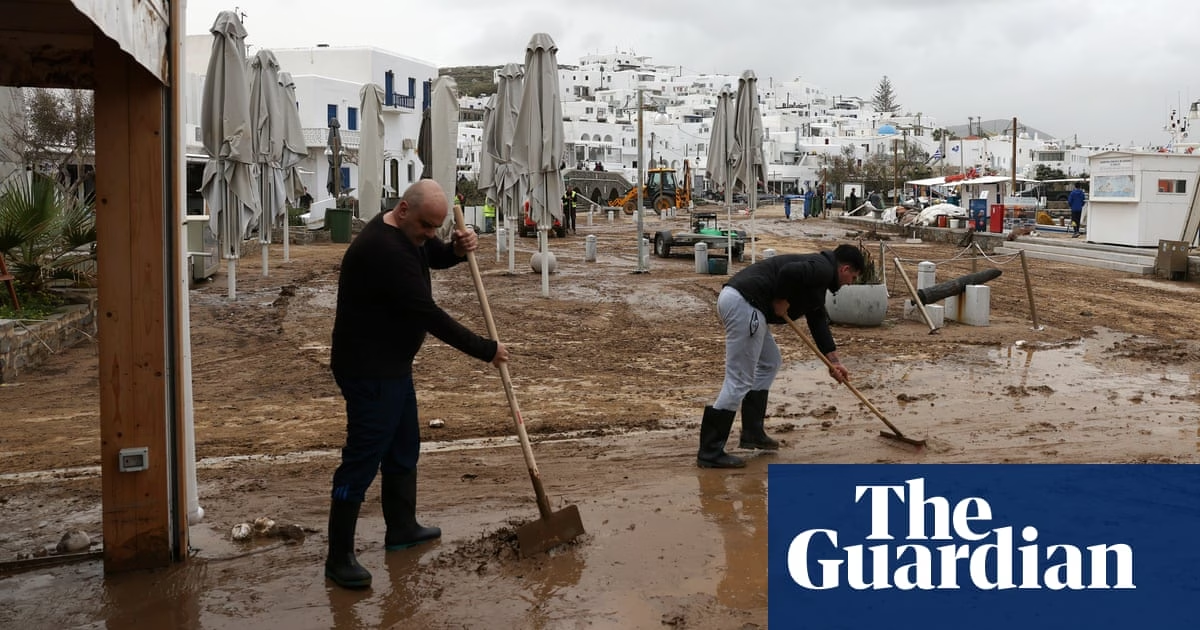Residents on the Aegean islands, accustomed to the gentle appearance and aroma of spring flowers in April, were left in shock following flash floods triggered by powerful gusts of wind. Authorities declared a state of emergency in several tourist hotspots in Greece just weeks before Easter.
According to Costas Bizas, the mayor of Paros, which suffered the most from a weather event unseen in decades, “It’s a complete disaster that unfolded in just two hours. We urgently need all the support we can get.”
In both Paros and Mykonos, among the country’s most visited islands, officials are racing against time to complete cleanup operations before tourists arrive for Easter. Emergency crews across the Cycladic islands, as well as in Rhodes and Crete, are dealing with scenes described as “apocalyptic” after the region experienced its heaviest rainfall in 20 years. On Paros, a local described the sea and land as “becoming one,” with cars, motorcycles, and furniture from beachside restaurants swept away by torrential rains. The city of Naoussa transformed into a “lake of mud.”
In Mykonos, landslides were triggered by hailstorms, with muddy water cascading through the whitewashed alleyways. Civil protection services urged residents to stay indoors.
The devastation in tourist zones, which attract thousands of visitors thanks to the rise in global travel, also highlights Greece’s unpreparedness for natural disasters. Critics point to the lack of proper flood management systems and the unregulated development on the islands that have grown in popularity for villas, hotels, and other high-end services.
Kriton Arsenis, a Greek environmentalist and former MEP, wrote that while the rainfall was intense, the true cause of the disaster was “decades of unsustainable construction.” He noted that Paros has seen rapid development, with an increase in new building permits surpassing even Mykonos and Santorini in recent years.
Furthermore, Nikos Syrigos, a commentator from the island of Syros, lamented that despite tourism driving Greece’s economy, the underdevelopment of its islands means they are unable to withstand intense weather events, especially beyond the peak summer season.
There is also a growing anger among Greeks over the poor state of public services, which has led to significant protests, including mass demonstrations on the second anniversary of the Tempe rail disaster. Mykonos’s former mayor, Konstantinos Koukas, criticized the lack of state funding on islands that see their populations drastically reduced in the winter. He argued that more resources should be allocated based on a location’s potential tourist traffic, rather than its permanent population, to better prepare for such emergencies.
Source: https://www.theguardian.com/world/2025/apr/04/greece-aegean-islands-flash-floods-mud-rainfall-easter-tourists








